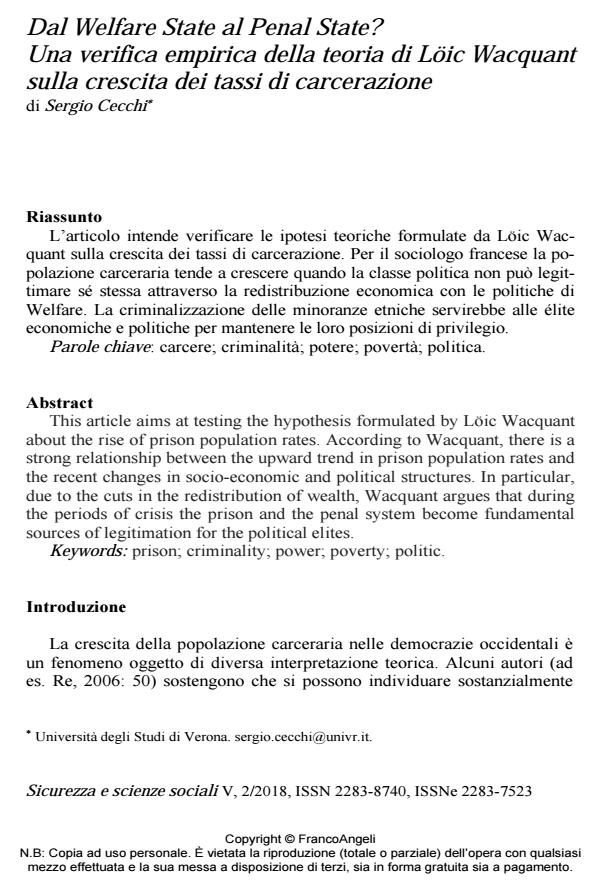Dal Welfare State al Penal State? Una verifica empirica della teoria di Löic Wacquant sulla crescita dei tassi di carcerazione
Journal title SICUREZZA E SCIENZE SOCIALI
Author/s Sergio Cecchi
Publishing Year 2019 Issue 2018/2
Language Italian Pages 19 P. 72-90 File size 256 KB
DOI 10.3280/SISS2018-002006
DOI is like a bar code for intellectual property: to have more infomation
click here
Below, you can see the article first page
If you want to buy this article in PDF format, you can do it, following the instructions to buy download credits

FrancoAngeli is member of Publishers International Linking Association, Inc (PILA), a not-for-profit association which run the CrossRef service enabling links to and from online scholarly content.
This article aims at testing the hypothesis formulated by Löic Wacquant about the rise of prison population rates. According to Wacquant, there is a strong relationship between the upward trend in prison population rates and the recent changes in socio-economic and political structures. In particular, due to the cuts in the redistribution of wealth, Wacquant argues that during the periods of crisis the prison and the penal system become fundamental sources of legitimation for the political elites.
Keywords: Prison; criminality; power; poverty; politic
Sergio Cecchi, Dal Welfare State al Penal State? Una verifica empirica della teoria di Löic Wacquant sulla crescita dei tassi di carcerazione in "SICUREZZA E SCIENZE SOCIALI" 2/2018, pp 72-90, DOI: 10.3280/SISS2018-002006